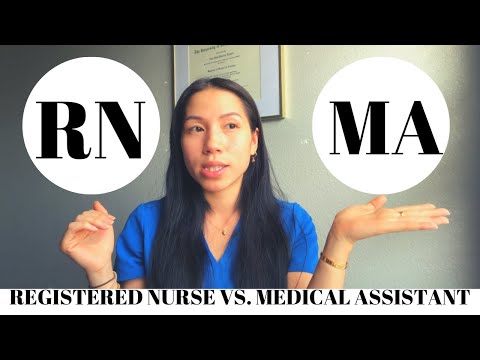What Ophthalmic Medical Assistants Need to Know
Contents
Ophthalmic Medical assistants need to have excellent customer service skills. They should be able to communicate well with patients, explain procedures, and provide instructions. They should also be able to work well under pressure and have good time management skills.
Checkout this video:
Job Description
An ophthalmic medical assistant is responsible for providing patient care in an ophthalmology office. They work closely with the ophthalmologist to provide comprehensive eye care to patients. Ophthalmic Medical Assistants must be able to perform a variety of tasks, including but not limited to: taking medical histories and measuring vital signs, performing visual acuity tests, administering eye medications, and teaching patients how to properly care for their eyes. In addition, ophthalmic medical assistants must be able to effectively communicate with patients, families, and other members of the healthcare team.
Duties and Responsibilities
Ophthalmic medical assistants typically have a wide range of duties and responsibilities. Their job description may include administrative tasks, such as scheduling appointments, maintaining patient records, and handling billing and insurance paperwork. They also play a vital role in the day-to-day operations of the ophthalmology practice, such as greeting patients, escorting them to examination rooms, and preparing them for examinations. In addition, ophthalmic medical assistants may be responsible for performing basic clinical tasks, such as measuring patients’ visual acuity, testing their intraocular pressure, and administering eye drops.
Skills and Qualifications
Medical assistants who work in ophthalmology offices must have excellent customer service skills. They interact with patients who may be nervous about their vision and need to be reassured. Medical assistants must be able to explain procedures and answer questions in a way that patients can understand.
In addition to customer service skills, medical assistants need to have strong attention to detail and good organizational skills. They need to be able to keep track of patients’ records, scheduling appointments, and maintaining equipment. They also may be responsible for ordering supplies and handling billing and insurance paperwork.
Some medical assistants specialize in working with children. They need to be able to relate to kids and put them at ease. They often work with patients who have conditions that require lifelong treatment, so they must be compassionate and caring.
To work as an ophthalmic medical assistant you usually need a high school diploma or equivalent. Some employers may prefer applicants who have completed a postsecondary education program in medical assisting or a related field.
Education and Training
In order to become an ophthalmic medical assistant you will need to have at least a high school diploma or equivalent. Some employers may require you to have completed a formal education program, but this is not always necessary. There are many community colleges and technical schools that offer programs specifically for ophthalmic medical assistants, which can last anywhere from six months to two years. These programs will often include both classroom and clinical components, and will prepare you for the certification exam.
Certification
There are several avenues to become a certified ophthalmic medical assistant (CMA). One option is to complete a certificate or diploma program from an accredited institution, such as a community college, vocational school, or technical institute. Alternatively, some CMAs earn certification through on-the-job training. The American Association of Ophthalmic Registered Nurses offers the Certified Ophthalmic Medical Technician credential for those who have earned certification from the Joint Commission on Allied Health Personnel in Ophthalmology (JCAHPO) and have successfully completed an oral and written examination.
Salary and Job Outlook
The median annual wage for ophthalmic medical assistants was $35,280 in May 2019. The median wage is the wage at which half the workers in an occupation earned more than that amount and half earned less. The lowest 10 percent earned less than $24,430, and the highest 10 percent earned more than $50,350.
In May 2019, the median annual wages for ophthalmic medical assistants in the top industries in which they worked were as follows:
Offices of physicians$35,580
Offices of other health practitioners34,700
General medical and surgical hospitals33,970
Outpatient care centers32,950
Employment of ophthalmic medical assistants is projected to grow 25 percent from 2019 to 2029, much faster than the average for all occupations. An aging population will increase demand for preventive medical services, which are often provided by physicians and other health practitioners. As a result, support staff such as ophthalmic medical assistants will be needed to perform routine administrative and clinical duties so that physicians have more time to see patients.
Working Conditions
Ophthalmic medical assistants (OMAs) typically work in ophthalmology offices and clinics. They may also work in hospitals, and some may travel to patients’ homes to provide ophthalmic care.
OMAs typically work full time. However, because many ophthalmologists work evenings and weekends, some OMAs may work part time or have variable schedules. Some OMAs may be required to work on call, which means they have to be available to come into the office or clinic if the ophthalmologist needs them.
Advancement Opportunities
Admission into an accredited ophthalmic medical assisting program is typically the first step toward a successful career in this growing field. Although certification is not always required, it may give job applicants an edge over the competition and may lead to opportunities for career advancement.
In addition to on-the-job training, many employers offer continuing education and professional development opportunities to help ophthalmic medical assistants keep up with the latest technology and advances in eye care. Some employers may also offer tuition reimbursement for employees who wish to further their education and take on additional responsibilities.
Key Terms
Below are key terms that you will encounter while working as an ophthalmic medical assistant. It is important to know these terms in order to effectively communicate with patients, as well as understand medical documentation.
-Anterior chamber: The front segment of the eye between the cornea and the iris
-Aqueous humor: The clear fluid that fills the anterior and posterior chambers of the eye
-Cataract: A clouding of the natural lens of the eye, causing decreased vision
-Computerized tomography (CT): A diagnostic imaging procedure that uses a computer to produce 3-dimensional images of structures inside the body
-Cornea: The clear, curved surface at the front of the eye that covers the iris, pupil, and anterior chamber
-Electroretinogram (ERG): A test used to measure electrical activity in retina in response to light stimulation
-Endothelial cells: Cells that line the inner surface of blood vessels
-Fovea centralis: The small area in the center of the retina where vision is most acute
-Glaucoma: A group of conditions that damage the optic nerve, resulting in loss of vision
Iris: The colored part of the eye that surrounds the pupil
Landolt C appositionally: A series of increasingly smaller targets used during visual acuity testing; also known as “hotdog” or “e” testing
Lens: A clear structure inside the eye that helps focus light onto the retina
Macula: The small area in the center of retina responsible for central vision; also known as “yellow spot”
Ophthalmoscope: An instrument used to examine fundus (back portion) of eye
Optical coherence tomography (OCT): A noninvasive imaging technique used to produce cross-sectional images of retinal structure
Posterior chamber: The back segment of space in front of lens and vitreous humor; filled with aqueous humor
Retina: A thin layer at back portion on inner surface of eye that is light sensitive; transmits visual impulses to brain via optic nerve
Tonometer: An instrument used to measure intraocular pressure (IOP)
Resources
The links below are to Ophthalmic Medical Assistant educational resources that may be helpful in your studies or in your work.
Ophthalmic Medical Assistant Job Descriptions
https://www.aao.org/ Career-Center/Pages/ophthalmic-medical-assistant-job-descriptions.aspx
Ophthalmic Technician Job Description
http://www.allaboutvision.com/eye-exam/ophthalmic-technician.htm
What Does an Ophthalmic Technician Do?
https://www.theodpgroup.com/careers_in_optometry/ophthalmic_technician_job_description







